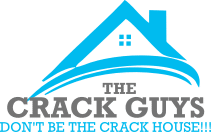Signs You Have Mold and Mildew In Your Basement
When most people think of basement mold, they imagine dark, musty-smelling basements with visible mold all over the bare concrete walls. However, in many cases, basement mold is more inconspicuous.
Because mold might grow on the insulation or behind the drywall in your basement, it may not be immediately noticeable. That’s why it’s important to know the symptoms related to a mold problem in your home as well as how you can start basement mold remediation.
Follow along with The Crack Guys as we explain what you need to look out for in order to keep your basement protected from mold and mildew!
Signs Mold And Mildew Are Growing In Your Basement
One of the most telling signs of mold growth is its appearance. Mildew and mold both refer to the growth of fungus, with mildew being a specific type and mold being a broader term. Because of this, there will be some differences in the way the two look.
Mildew typically grows flat and takes on a white or gray color, though it can turn brown. Since mold is a broader category, its appearance has more variance. For example, its color can range between green, blue, red, black and more. It also tends to grow with a more raised texture.
Other signs that can mean mold or mildew are present include musty odors and poor health. It’s important to take these signs and symptoms seriously as catching the problem early can help limit their consequences.
Why Is Mold And Mildew Growth Bad?
Exposure to mold can lead to a host of health problems, and the most common symptoms are similar to those someone would face with allergies. This includes:
- Coughing or wheezing
- Red or watery eyes
- Sinus congestion
- Lightheadedness
These aren’t the only ways mold and mildew can impact your health though. Exposure can also cause stiffness in the joints, a metallic taste in the mouth and more. In fact, frequent exposure to mold can cause respiratory and heart problems.
Don’t risk your or your family’s well-being! Instead, protect your health and take the necessary steps to keep your home mold-free!
What Causes Mold Growth?
Mold and mildew will grow in areas that are wet or receive large amounts of moisture. Common areas in a home that experience this growth include bathrooms and basements.
In many cases, basement water may be caused by cracks in your foundation. These cracks could be the result of foundation movement due to temperature changes, normal foundation settlement with aging or pressure from water-logged soil near the concrete.
Basement water problems can also be the result of excess water building around your foundation. If water is allowed to pool near your foundation for long periods of time, it may eventually seep through the porous concrete and infiltrate your basement.
Settling or sinking foundations may also lead to gaps between the foundation and the home, creating a perfect entry point for water. In some cases, basement water is the result of leaky pipes, malfunctioning sump pump systems or plumbing issues.
How Can A Mold Remediation Company Help?
While mold can be difficult to get rid of, it’s not impossible — especially when mold remediation specialists are here to help! With The Crack Guys, you can count on our team to provide the help your Tennessee or Alabama home needs! Here’s how we can help!
Mold Inspection
The first step our team will take is to identify where the growth is as well as the source of the mold problem. We will figure out where the excess moisture that is causing the mold growth is coming from to help eliminate mold completely.
Mold Remediation
For mold removal in basements and crawl spaces, we use a technique called mold soda blasting. This abrasive process cleans mold from the surfaces in your basement and disinfects at the same time.
Waterproofing Basement Services
Once all traces of mold are gone, it is important to fix the source of the mold issue so that it does not return. We offer a number of basement waterproofing services that help keep your home mold and moisture free. These include:
- Surface Drainage
- Exterior Waterproofing
- Interior Waterproofing
- Crack Repair
To learn what these waterproofing options can do for your home, reach out to our team! We’re happy to provide the answers you’re looking for!
Contact The Crack Guys To Restore Your Basement’s Health!
When your home is suffering the consequences of mold and mildew problems, count on The Crack Guys to help provide the solution you need! Contact our team to schedule your service.



